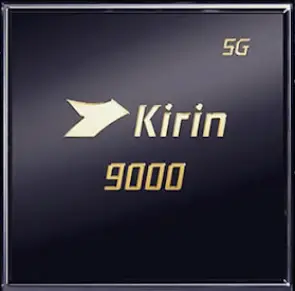Hisilicon Kirin 9000 vs Apple A16 Bionic
We’ve crafted a detailed comparison between the recently launched Kirin 9000 and A16 Bionic chip SoCs, developed by Hisilicon and Apple respectively. Our assessment weighs the benefits and drawbacks of these 8-core and 6-core processors based on Geekbench, Antutu, and 3DMark benchmarks, as well as their full technical specifications.
Review
CPU Performance
Evaluation of Single-Core and
Multi-Core Processor Performance
Gaming Performance
Gaming and OpenCL/Vulkan
Performance of the Graphics Processing Unit (GPU)
Battery life
Energy Efficiency in Battery Usage
Tech Insist Score
Overall Performance Rating of the
Chip
Key Differences
Pros of Kirin 9000
- Kirin 9000 has -45.64% higher GPU clock speed than A16 Bionic chip (760 vs 1398 MHz).
Pros of A16 Bionic chip
- A16 Bionic chip has 10.54 % higher CPU clock speed than Kirin 9000 ( 3460 vs 3130 MHz).
- A16 Bionic chip has 132.73 % higher memory frequency than Kirin 9000 ( 6400 vs 2750 MHz).
- A16 Bionic chip has 26.57 % better AnTuTu 9 score than Kirin 9000 ( 965 K vs 762 K).
- A16 Bionic chip has latest instruction set, hence better than Kirin 9000 .
- A16 Bionic chip Support 16.36 % higher memory bandwidth than Kirin 9000 ( 51.2 vs 44 GB/s).
Benchmarks
Evaluating performance through competitive testing in leading benchmarks.AnTuTu 10
| CPU | 194527 | 247110 |
| GPU | 280796 | 408357 |
| Memory | 146761 | 162944 |
| UX | 140303 | 146541 |
| Total score | 762387 | 964952 |
GeekBench 6
Single-Core Score
Multi-Core Score
3DMark
3DMark Wild Life Performance
| Stability | 54% | 79% |
| Graphics test | 36 FPS | 59 FPS |
| Score | 6040 | 9862 |
Specifications
Full list of technical specifications of Kirin 9000 and Dimensity 9300CPU
| Architecture | 1x 3.13 GHz Cortex-A77 3x 2.54 GHz Cortex-A77 4x 2.05 GHz Cortex-A55 |
2x 3.46 GHz – Everest 4x 2.02 GHz – Sawtooth |
| Cores | 8 | 6 |
| Base Frequency | 2050MHz | 2020MHz |
| Turbo Frequency | 3130MHz | 3460MHz |
| Instruction set | ARMv8.2-A | ARMv9-A |
| L2 cache | 64 KB | 256 KB |
| L2 cache | 0.512 MB | 16 MB |
| L3 cache | 4 MB | - |
| Process | 4 nanometers | 4 nanometers |
| Transistor count | 15.3 billion | 16 billion |
| TDP (Sustained Power Limit) | 4 W | 8 W |
Graphics
| GPU name | Mali-G78 MP24 | Apple A16 GPU |
| Architecture | Valhall 2 | Apple GPU |
| GPU frequency | 760 MHz | 1398 MHz |
| Pipelines | 24 | 6 |
| Shading units | 384 | 768 |
| Total shaders | 768 | 1536 |
| FLOPS | 1076 Gigaflops | - |
| Vulkan version | 1.1 | - |
| OpenCL version | 2 | - |
| DirectX version | 12 | - |
AI Accelerator
| Neural processor (NPU) | AI accelerator | Neural Engine |
Memory
| Memory type | LPDDR5 | LPDDR5 |
| Memory frequency | 2750 MHz | 6400 MHz |
| Bus | - | - |
| Max bandwidth | 44 Gbit/s | 51.2 Gbit/s |
| Max size | 16 GB | 8 GB |
Multimedia (ISP)
| Storage type | UFS 3.1 | NVMe |
| Max display resolution | 3840 x 2160 | 2796 x 1290 |
| Max camera resolution | 1x 200MP, 2x 25MP | 1x 48MP |
| Video capture | 4K at 60FPS | 4K at 60FPS |
| Video playback | 4K at 60FPS | 4K at 60FPS |
| Video codecs | H.264, H.265, VP9 | H.264, H.265, VP8, VP9, Motion JPEG |
| Audio codecs | AAC, AIFF, CAF, MP3, MP4, WAV | AAC, AIFF, CAF, MP3, MP4, WAV, AC-3, E-AC-3, AAX, AAX+ |
Connectivity
| Modem | Balong 5000 | - |
| 4G support | LTE Cat. 24 | LTE Cat. 24 |
| 5G support | Yes | Yes |
| Download speed 5G | Up to 7168 Mbps | Up to 7500 Mbps |
| Download speed 4G | - | - |
| Upload speed 5G | Up to 2560 Mbps | Up to 3500 Mbps |
| Upload speed 4G | - | - |
| Wi-Fi | 6 | 6 |
| Bluetooth | 5.2 | 5.3 |
| Navigation | GPS, GLONASS, Beidou, Galileo, NAVIC | GPS, GLONASS, Beidou, Galileo, QZSS |
Info
| Announced | October 2020 | September 2022 |
| Class | Flagship | Flagship |
| Model number | - | APL1W10 |
| Official page | Kirin 9000 official site | A16 Bionic chip official site |

